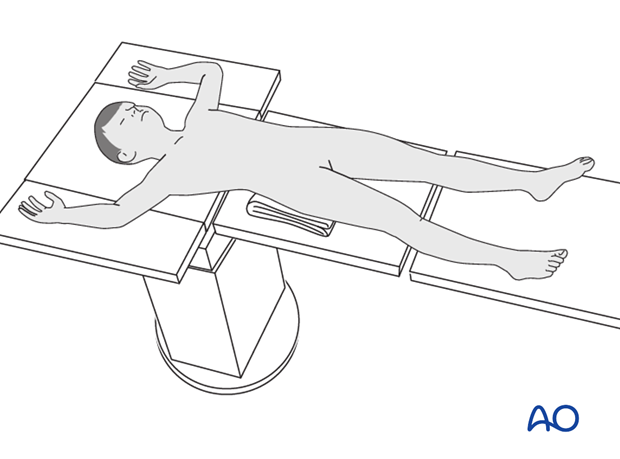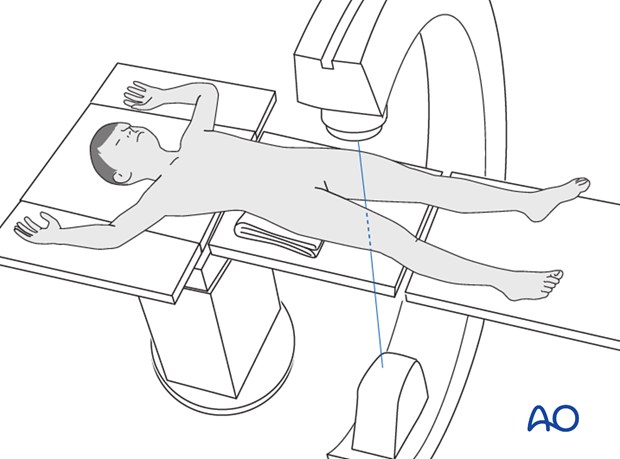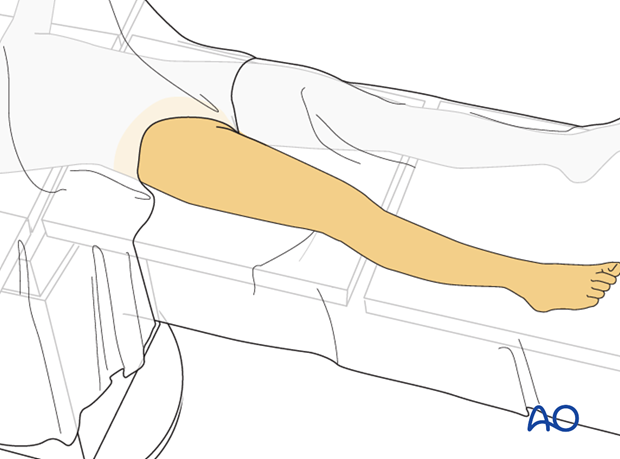Patient preparation in supine position
1. Preoperative preparation
Read the additional material on preoperative preparation.
2. Anesthesia
- General anesthesia
- Local nerve block in addition to pain management
- Combination of nerve block and light general anesthesia
3. Prophylactic antibiotics
Antibiotics are administered according to local antibiotic policy and specific patient requirements.
Many surgeons use Gram-positive prophylactic antibiotic cover for operative management of closed fractures, adding Gram-negative prophylactic cover for open fractures.
4. Patient position
Place the patient supine on a radiolucent table.
A small support on the ipsilateral buttock may help to stabilize the pelvis during the procedure.
If necessary place a support under the knee to relax the gastrocnemius muscle and reduce the deforming forces on the distal femur.

5. C-arm positioning
The C-arm comes in from the uninjured side.
Set up the C-arm to allow AP and lateral views without moving the leg.
Either lower the contralateral leg or raise the injured knee to obtain lateral views.

6. Skin preparation and draping
Prepare the entire leg including the foot.
Drape the entire leg up to the pelvis.

7. OR set-up
The optimal position of the surgeon is on the injured side of the patient.
The position of the screen should allow a direct view for the surgeon.













